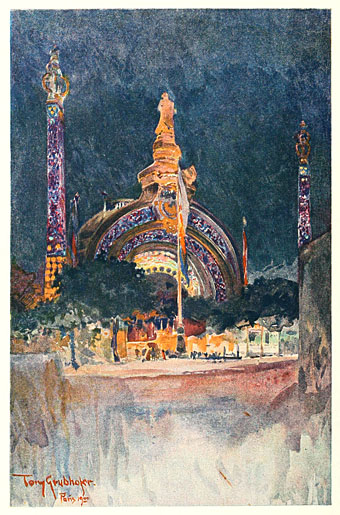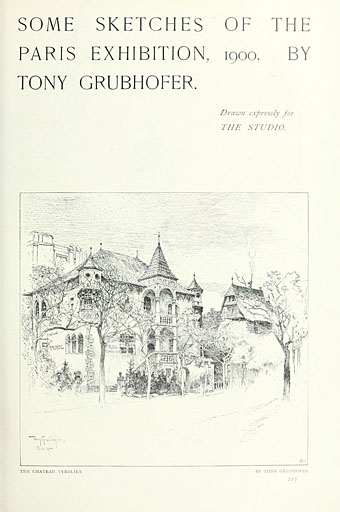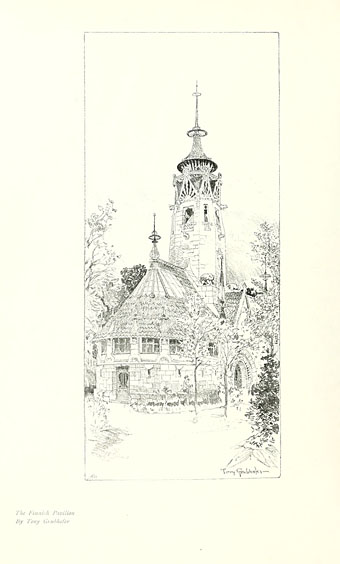I’m sure I’ll run out of things to say on this subject eventually but it’s showing no sign of happening yet. In an exposition with its fair share of unusual buildings, the Grand Globe Céleste in the Paris Exposition Universelle of 1900 was one of the more notable constructions. An enormous globe built on the banks of the Seine close to the Champs de Mars, the Grand Globe Céleste was some 50 meters in diameter with its attractions including a restaurant and an exhibition space in the interior showing planetary orbits and maps of the stars. Enormous globes became a common feature of later world’s fairs which makes me wonder whether this example was the first of its kind. A far larger structure was proposed for the 1893 exposition in Chicago but never built.
The poster here is from the archives at Gallica. Searching around for other images turned up a wiki I hadn’t come across before devoted to the Exposition Universelle. The page there for the Grand Globe has a picture of one of the exposition’s tragedies caused when a footbridge leading to the attraction collapsed, killing five people. (The intact footbridge can be seen on this view facing towards the river.)
Previously on { feuilleton }
• Tony Grubhofer’s Exposition Universelle sketches
• The Cambodian Pavilion, Paris, 1900
• Le Manoir a l’Envers
• Suchard at the Exposition Universelle
• Esquisses Décoratives by René Binet
• Le Palais de l’Optique, 1900
• Exposition Universelle films
• Exposition jewellery
• Exposition Universelle catalogue
• Exposition Universelle publications
• Exposition cornucopia
• Return to the Exposition Universelle
• The Palais Lumineux
• Louis Bonnier’s exposition dreams
• Exposition Universelle, 1900




